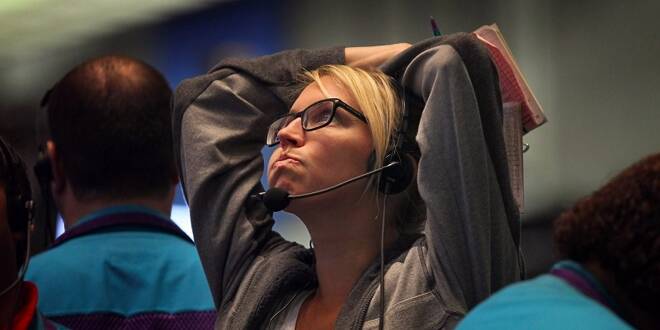Advertisement
Advertisement
Are We at the End of the Economic Cycle?
Updated: Dec 30, 2018, 15:41 GMT+00:00
2018 was a rough year for traders, as they faced extremely high market volatility and uncertainty. Worse yet, there are signs that indicate that we’re not going to get any relief next year – in fact, 2019 might be even tougher for traders. Are we at the end of the economic cycle?
What happened in 2018?
The Federal Reserve increased the cost of money in the U.S. by raising short-term interest rates, and it is still planning 2 rate hikes in 2019, as U.S. inflation is now sitting near its 2% target for the first time in years.
A strong U.S. economy – not to mention a rather hawkish American monetary policy – supported the greenback in 2018, affecting, in turn, many emerging market currencies, especially those of developing economies with large debts in USD.
Some analysts, such as the Goldman Sachs research team, still think that the Central Bank hasn’t sufficiently taken into consideration the downside risks associated with trade tensions and the global economic slowdown in its forecast.
According to the World Bank: “Global growth is expected to edge down over the next two years, as global slack dissipates, trade and investment moderate, and financing conditions tighten.”
In 2018, the trade order was disrupted, threatening global trade relations and global economic growth. American protectionism measures, especially towards China, have altered the balance of economic powers, increasing geopolitical and economic risks.
In Europe, things were not better.
Prime Minister Theresa May will not bring her Brexit deal back to parliament before mid-January, which doesn’t leave much time for the exit deal to be approved before the official date of the UK’s departure on March 29th, 2019.
The European Commission is still struggling with many countries’ 2019 spending plans, while France has had to deal with the yellow vest anti-government movement since last November, which has frequently degenerated into violence.
2019 – A Transition Year?
While the U.S. is currently enjoying their longest expansion phase in decades – with some American indices experiencing their longest winning streak ever this year – several economic indicators are now predicting higher market volatility ahead, as well as a potential end to the current economic cycle.
An economic cycle is part of the natural fluctuations of any given economy, with “expansion” and “contraction” phases. Usually, every economic cycle has 4 stages – “expansion”, “peak”, “contraction” and “trough” – where growth, employment, consumer spending, and inflation strongly vary, impacting the financial markets.
As we seem to be in the very late stages of an economic expansion phase, traders should focus on a few factors that could, together, signal a turning point:
- Higher market volatility (especially measured by the VIX, or the fear index)
- Anti-growth protectionism measures and their impact on trade opportunities (consequences of the Brexit and the trade war between China and the U.S. for instance)
- Inverted yield curve (short-term rates being higher than long-term rates)
An inverted yield curve has made the headlines this year
Of course, we’ve heard a lot about trade wars and market volatility this year, but traders and economists have closely monitored the evolution of the yield curve this year, as an inverted yield curve, also called negative yield curve, is considered as a predictor of economic recession.
This type of yield curve has almost always led to a recession of 12 to 18 months later, and it is considered an accurate forecast of a potential turning point in the economic cycle.
Normally, shorter maturities are supposed to have a lower yield than longer maturities, as investors usually ask for a premium in exchange for investing their money for longer periods.
With an inverted yield curve, however, investors are expecting lower interest rates in the short-term (which usually happens in a low growth environment), increasing the demand for longer-term bonds, which pushes their yields down.
Are We at the End of the Economic Cycle?
Predicting the future path of economic growth, as well as whether or not we might be entering into a recession, is always a tough exercise, as there are many variables involved.
Many financial and economic metrics about the U.S. economy are showing “late cycle signals”. However, which traders should take into consideration when rebalancing their portfolios?
Here are the 5 most important issues to watch for in 2019:
- Trade relations
- Market instability, higher volatility, and uncertainty
- Global growth
- The pace of the Federal Reserve rate hikes and the yield curve
- Political decisions or movements
When deciding whether or not to enter the markets, traders should think about their risk-tolerance and their time-horizon first.
This is especially true in such uncertain and volatile times, where we might be about to enter another stage of the economic cycle, which will also impact the stock market cycles and trigger volatility.
Higher market volatility means that there are more trading opportunities traders can profit from to enhance their trading performance using a reliable and trustworthy broker, like OlympTrade, who can provide the right trading instruments with the appropriate money and risk management tools to protect investor funds.
About the Author
Carolane De Palmascontributor
Carolane's work spans a broad range of topics, from macroeconomic trends and trading strategies in FX and cryptocurrencies to sector-specific insights and commentary on trending markets. Her analyses have been featured by brokers and financial media outlets across Europe. Carolane currently serves as a Market Analyst at ActivTrades.
Advertisement
